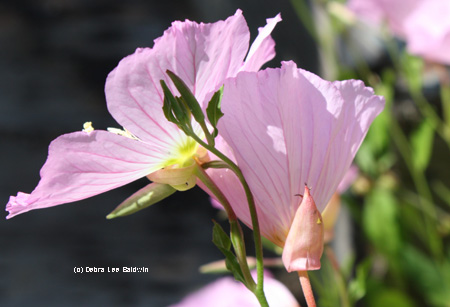
Is there a plant in your garden that you once longed for and now wish you could get rid of? Meet mine: Mexican evening primrose (Oenothera speciosa).
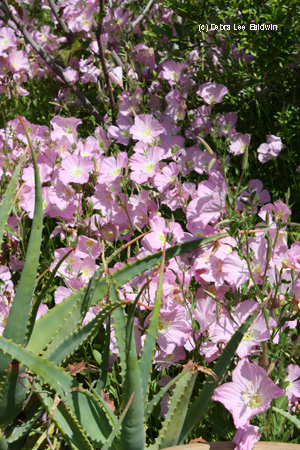
You can see why I wanted them. Mexican evening primroses form diaphanously lovely, cloudlike mass of pink. I had seen them in other gardens, and wondered why no nurseries sold them. Finally, I found some at a farmer’s market. But once planted, the primroses drooped and disappeared. So, I bought some more. Same thing—I couldn’t seem to keep them going. Imagine my surprise when, the following year, I had primroses galore. It seems their topgrowth dies back after blooming, but the roots are still alive. Great, right?
Wrong. Guess I should have paid attention to this part of the description in the Sunset Western Garden Book: “…can be aggressive and potentially invasive.”
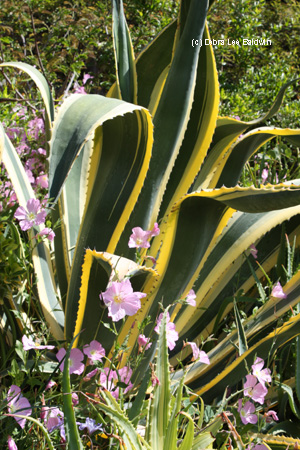
It seems Mexican evening primrose is so accustomed to inhospitable growing conditions—dry, rocky, nutrient-poor soil—that in a cultivated garden, it goes wild. Here you see it cavorting around a bewildered Agave americana ‘Marginata’. Oenothera reproduces via underground roots that send forth new plants.
Five or six years ago I sifted the soil in my flowerbeds to get rid of primrose roots. I was determined to win, and I thought I had, for a while. But it seems even if you go after the plants with a vengence, if the merest root remains, Mexican evening primroses bounce right back.
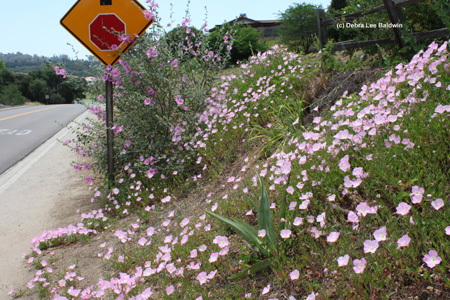
After observing that the roots grow readily downhill but never uphill, at least, not on an unwatered, decomposed granite slope, I transplanted some to my garden’s most inhospitable area: below the fence, along the road. Here you see the result. I’m actually pleased. (Score one for Debra.) That shrub behind the sign is a mallow, btw.
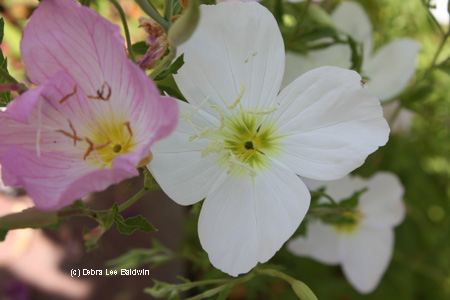
I also grow a white variety of Mexican evening primrose that doesn’t seem to be as invasive.
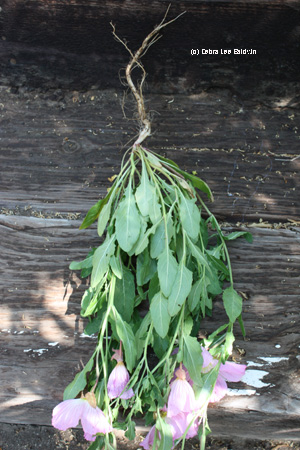
Last summer I relandscaped a section of the garden. The primrose had naturalized nearby, but was safely (or so I thought) on the other side of a pathway. I didn’t think its roots could—or would—cross the path. But it saw a golden opportunity (rich soil, full sun, lots of room) and has popped up amid young plants that are not yet established. It’s fairly easy to pull out of friable, well-mulched soil. But the taproot is like rubber, and it stretches and then snaps.
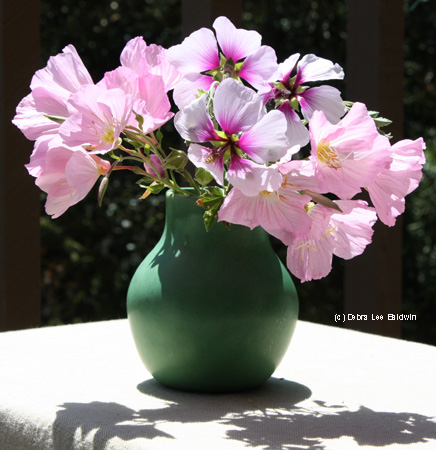
I am loathe to use chemicals, but I may go after the plants with Round-Up. Seems such a shame, with flowers as pretty as these. So, first, a bouquet…with mallows.
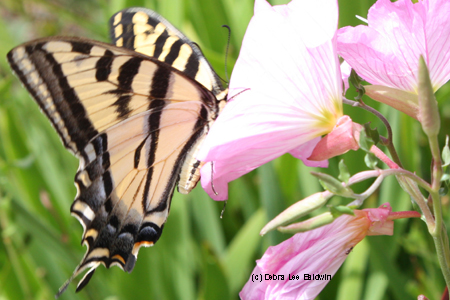
(Hours before this was scheduled to be posted, look what I saw in the garden. OK, primroses, you have a reprieve. For now.)
